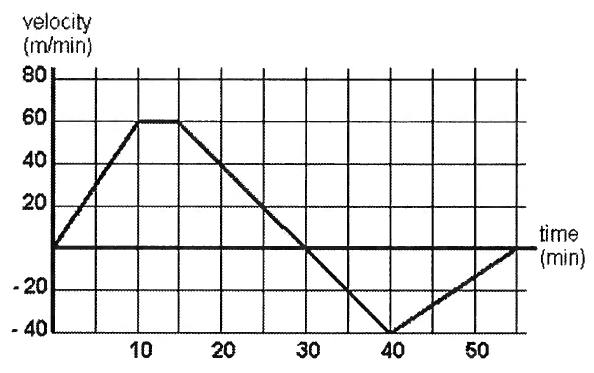MONOTONICITY OF THE FUNCTION
Definition :
A function that is completely increasing or completely decreasing on the given interval is called monotonic on the given interval.
Test for monotonic functions :
Let I be an open interval. Let f : I → R be differentiable. Then
(i) The function f is increasing if and only if f ′(x) ≥ 0 for all x in I.
(ii) The function f is decreasing if and only if f ′(x) ≤ 0 for all x in I.
Example 1 :
Check whether the function
y = sin x + cos 2x
is monotonic on the interval [0,Π/4]
Solution :
f(x) = sin x + cos 2x
f'(x) = cos x - sin 2x [2 (1)]
f'(x) = cos x - 2 sin 2x
By applying x = 0, we get
f'(0) = cos 0 - 2 sin 2(0)
f'(0) = 1-2 (0)
f'(0) = 1 - 0
f'(0) = 1 > 0
By applying x = Π/4, we get
f'(Π/4) = cos Π/4 - 2 sin 2(Π/4)
f'(Π/4) = 1/√2 - 2 sin (Π/2)
f'(Π/4) = 1/√2 - 2 (1)
f'(Π/4) = 1/√2 - 2
f'(Π/4) = 0.707 - 2
f'(Π/4) = -1.292 < 0
Thus f′ is of different signs at 0 and π/4. So, the given function is not monotonic function on the interval [0, Π/4].
Example 2 :
Check whether the function
y = x sin x
is monotonic on the interval [Π/2, Π]
Solution :
f(x) = x sin x
f'(x) = x (cos x) + sin x (1)
f'(x) = x (cos x) + sin x
By applying x = Π/2
f'(0) = Π/2 (cos Π/2) + sin Π/2
f'(0) = Π/2 (0) + 1
f'(0) = 1 > 0
By applying x = Π
f'(Π) = Π (cos Π) + sin Π
f'(0) = Π (-1) + 0
f'(0) = - Π < 0
So, the function is not monotonic function.
Example 3 :
Discuss monotonicity of the function
(i) ex for all real numbers.
(ii) log x on (0, ∞)
Solution :
(i) f(x) = ex
Let f(x) = ex
f'(x) = ex
- If x > 0, then f′(x) > 0. The function is strictly increasing for all positive values of x.
- If x < 0 then f′(x) > 0. The function is strictly increasing for all negative values of x.
- If x = 0, then f'(x) = 1,we get positive value for f'(x).
So, the function monotonic on real numbers.
(ii) f(x) = log x on (0, ∞)
Let f(x) = log x
f'(x) = 1/x
If x > 0, then f′(x) > 0. The function is strictly increasing for all positive values of x.
So, the function monotonic on (0, ∞).
Example 4 :
If the slope of a strictly monotonic function f is 4/9 at a particular point (a, b), what is the slope of f-1 at the point (b, a)?
a) 4/9 b) 9/4 c) -5 d) 5
Solution :
Slopes of inverse functions are reciprocals of corresponding points.
So, the required slope is 9/4.
Example 5 :
Let f be a differential function over [0, 10] such that f(0) = 0 and f(10) = 3. If there are exactly two solutions to f(x) = 4 over (0, 10), then which of these statements must be true?
a) f'(c) = 0 for some c on (0, 10)
b) f has local maximum at x = 5
c) f''(c) = 0 for some c on (0, 10)
d) 0 is absolute minimum of f.
e) f is strictly monotonic
Solution :
Since there are exactly two points on (0, 10) where f has a value of 4, the graph of f must cross the line x = 4 twice. Once on the way up the once on the way down. The fact that f is differentiable over the interval insures no cups or discontinuities.
Since the curve turns around somewhere on (0, 10) there must be at least one horizontal tangent on (0, 10). Horizontal tangents are places where the derivative is equal to zero.
Example 6 :
Find the intervals of monotonicity and local extrema of the function f(x) = x log x + 3x
Solution :
f(x) = x log x + 3x
f'(x) = x(1/x) + log x (1) + 3(1)
= 1 + log x + 3
= 4 + log x
Let f'(x) = 0
4 + log x = 0
log x = -4
x = e-4
The intervals of monotonicity are (0, e-4) and (e-4, ∞)
|
Intervals |
f'(x) = 4 + log x |
Increasing / decreasing |
|
(0, e-4) |
x = e-5 f'(e-5) = 4+log e-5 = 4 + (-5) = -1 < 0 |
Decreasing |
|
(e-4, ∞) |
x = e-3 f'(e-3) = 4+log e-3 = 4 + (-3) = 1 > 0 |
Increasing |
Since f'(x) changes from negative to positive when passing through x = e-4, the first derivative test tells us there is a local maximum at x = e-4 and it is f(e-4) = -e-4
Kindly mail your feedback to v4formath@gmail.com
We always appreciate your feedback.
©All rights reserved. onlinemath4all.com
Recent Articles
-
AP Calculus AB Problems with Solutions (Part - 19)
Apr 24, 25 11:10 PM
AP Calculus AB Problems with Solutions (Part - 19) -
AP Calculus AB Problems with Solutions (Part - 18)
Apr 24, 25 11:06 PM
AP Calculus AB Problems with Solutions (Part - 18) -
Derivative of Absolute Value of x Using Limit Definition
Apr 23, 25 11:11 AM
Derivative of Absolute Value of x Using Limit Definition
